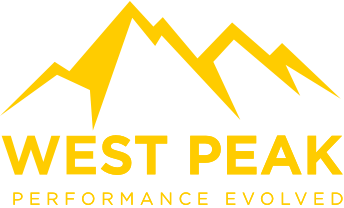How to Build a Feedback-Driven Culture That Inspires Growth
In today’s fast-paced business environment, one of the most powerful tools for growth is feedback. Yet, many organisations struggle to foster a culture where feedback is welcomed, shared, and used for continuous improvement. If you want your team to thrive, building a feedback-driven culture is non-negotiable.
This blog will guide you through actionable steps to create a safe and supportive environment for feedback, where people feel empowered to learn and grow.
Why Is Feedback So Important for Growth?
Leaders often focus on goals, productivity, and output—but what about the feedback loops that help achieve those goals? Feedback isn’t just for performance reviews; it’s a tool for real-time development. Constructive feedback gives individuals the chance to refine their skills, correct mistakes, and build stronger relationships within the team.
When leaders foster a feedback-driven culture, they create an environment where improvement is constant and everyone is aligned toward growth.
What Does a Feedback-Driven Culture Look Like?
A feedback-driven culture is one where employees feel safe sharing both positive and constructive feedback without fear of judgment. It’s a space where feedback isn’t personal but seen as a way to help everyone grow.
Characteristics of a feedback-driven culture include:
- Open communication across all levels
- Regular, informal feedback opportunities
- Constructive criticism that is actionable and specific
- Positive reinforcement to recognise successes
- Leadership that models receiving and giving feedback

How Can Leaders Build a Feedback-Driven Culture?
- Start by Leading by Example
If you want your team to embrace feedback, you need to demonstrate how it’s done. Regularly ask for feedback from your team, listen actively, and show that you’re willing to adapt based on what you hear.
When leaders show humility and a genuine commitment to growth, it encourages the same behaviour in the team.
Action Step: Hold a monthly feedback session where team members can anonymously give feedback, or host a leadership “open feedback” hour where employees can directly share their thoughts.
- Create Psychological Safety
Creating a safe space where individuals feel comfortable sharing feedback is crucial. People need to trust that their feedback will be taken seriously and won’t negatively impact their job or relationships.
To cultivate psychological safety:
- Encourage vulnerability by acknowledging your own mistakes
- Respond to feedback with gratitude, not defensiveness
- Ensure confidentiality when necessary
Action Step: Begin team meetings with a “feedback moment” where team members can offer suggestions or highlight areas for improvement without fear of repercussions.
- Make Feedback Regular and Normalised
Feedback should be an ongoing process, not a rare event reserved for annual performance reviews. Regular feedback builds a continuous improvement mindset and makes the process feel normal.
To normalise feedback:
- Schedule regular one-on-one meetings
- Create an open door policy for informal feedback
- Encourage peer-to-peer feedback, not just top-down
Action Step: Incorporate weekly feedback moments into team meetings, where team members can reflect on wins and challenges.
- Ensure Feedback is Specific and Actionable
The most effective feedback is specific and tied to clear actions. Vague feedback like “You need to improve” doesn’t help anyone. Instead, break down what needs improvement and suggest concrete steps to achieve it.
Example: Instead of saying, “You need to communicate better,” try: “In the last meeting, I noticed you didn’t clarify your key points, which caused confusion. Next time, try summarising at the end of your presentation.”
Action Step: Encourage team members to frame feedback using the “Situation-Behaviour-Impact” (SBI) model:
- Situation: Describe the context.
- Behaviour: Detail the specific action.
- Impact: Explain the result or effect of the behaviour.
- Celebrate Wins and Positive Feedback
While constructive feedback is important, recognising success is equally critical. Positive feedback reinforces good behaviour and builds morale. A culture that celebrates wins makes people more open to receiving constructive criticism because they know their strengths are also valued.
Action Step: Make time to acknowledge the team’s achievements during meetings. Celebrate milestones, big or small, to build a positive feedback loop.

The Role of Emotional Intelligence in Feedback
Emotional intelligence (EQ) plays a huge role in how feedback is given and received. Leaders with high EQ can better understand their team’s emotional responses to feedback and tailor their approach accordingly.
When leaders practice empathy, active listening, and emotional self-regulation, they create an environment where feedback is seen as a pathway to growth, not conflict.
Action Step: Offer emotional intelligence training as part of leadership development. Help leaders learn how to manage emotions, both their own and their team’s, to improve feedback dynamics.
Why Leaders Must Embrace a Growth Mindset
At the heart of a feedback-driven culture is the concept of a growth mindset. This idea, coined by psychologist Carol Dweck, focuses on the belief that abilities and intelligence can be developed through dedication and hard work. Leaders with a growth mindset see feedback not as a critique but as an opportunity to grow.
Action Step: Foster a growth mindset by rewarding efforts and improvements, not just outcomes. Encourage your team to view challenges as opportunities to learn rather than threats.
Building a Feedback-Driven Culture Takes Time
Creating a feedback-driven culture doesn’t happen overnight—it’s a long-term investment. But by modelling the right behaviours, encouraging open communication, and making feedback a regular practice, you can transform your organisation into a space where everyone feels empowered to grow.
Remember: A feedback culture isn’t just about improving performance; it’s about building trust, developing skills, and fostering a positive environment where everyone can thrive.
Subscribe to our Podcast
Hosted by our very own Ben Stocken and Benjamin Wade our ‘How They Lead’ podcast aims to evolve the way people perform in leadership roles by showcasing a variety of high performance interviews with people from Patrick Kershaw from The RAF Red Arrows to CEO’s like Steve Phillips who help large brands like Pepsi, Mars and Unilever.
Get one step ahead – Click below to subscribe.










